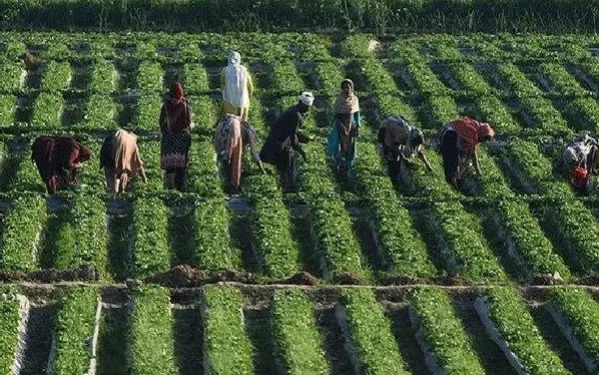Sindh’s agricultural sector has witnessed a remarkable scientific breakthrough, as agricultural scientists have successfully developed 22 new high-yielding and low-water-consuming crop varieties. This achievement is expected to revolutionize farming in the region, particularly in the face of climate change and water scarcity challenges.
Historic Approval by Provincial Seed Council
A meeting of the Provincial Seed Council was held under the chairmanship of Sindh Agriculture Minister Sardar Muhammad Bakhsh Khan Mehr, where the committee unanimously approved the cultivation of these newly developed crops. The varieties include improved strains of cotton, corn, mustard, rice, lentils, and mangoes, all designed to yield better results with minimal water usage.
The meeting was attended by key stakeholders, including Secretary of Agriculture Sohail Ahmed Qureshi, Director General of Research Mazhar Kerio, prominent farmer leader Nadeem Shah, agricultural experts, and scientists from Sindh and Punjab. Additionally, DG Agriculture Extension Munir Ahmed Jumani and MD Seed Corporation Mushtaq Ahmed Soomro were also present, underscoring the significance of this development for the future of agriculture in Sindh.
Partial Approval for Cotton and Rice Varieties
During the meeting, the council granted partial approval for the cultivation of three newly introduced varieties of cotton and four varieties of rice for an initial period of one year. These crops will be closely monitored to evaluate their performance under real farming conditions before granting full approval.
Among the new maize varieties introduced, Mazhar Gold, Sindh Rani, and Sirhan have shown promising results in initial trials. These crops are expected to provide farmers with better yields while requiring significantly less water compared to traditional varieties.
Addressing Climate Change Through Agricultural Innovation
Speaking on the occasion, Sindh Agriculture Minister Sardar Muhammad Bakhsh Khan Mehr emphasized the urgent need to adapt to climate change. He highlighted how rising temperatures and unpredictable rainfall patterns are disrupting traditional farming cycles, making it imperative to develop crops that can withstand these challenges.
“The increase in global temperatures and irregular rainfall patterns have necessitated a shift in our agricultural practices. These newly developed crops will help farmers maintain productivity despite limited water availability,” said Minister Mehr.
Sindh Surpasses Punjab in Cotton Production
One of the most significant revelations from the meeting was that Sindh has overtaken Punjab in cotton production for the first time. This achievement is attributed to a combination of better crop management, adoption of modern agricultural techniques, and the successful implementation of new seed varieties.
“Farmers in Sindh, with the support of the Agriculture Department, have demonstrated exceptional care in cultivating cotton. Despite the ongoing water scarcity, we have successfully increased production, securing Sindh’s position as a leading agricultural hub in Pakistan,” added the Agriculture Minister.
The Role of Research and Development in Agricultural Growth
The development of these 22 high-yielding, low-water crops is the result of years of dedicated research and innovation by Sindh’s agricultural scientists. By leveraging modern breeding techniques and genetic advancements, researchers have been able to create crop varieties that are not only resilient to water shortages but also capable of delivering superior yields.
Agricultural experts believe that such advancements will encourage more farmers to adopt sustainable farming practices, ultimately contributing to food security and economic stability in the region.
Future Prospects and Implementation Strategy
The next step in the process is to ensure widespread adoption of these new crop varieties among farmers. The Sindh Agriculture Department, in collaboration with research institutions, will launch awareness campaigns and training programs to educate farmers on the best practices for cultivating these new crops.
Furthermore, policymakers are expected to introduce incentives and subsidies to promote the use of these innovative seeds. This move will not only boost agricultural productivity but also help in mitigating the adverse effects of climate change on the farming sector.
Conclusion
The approval of 22 new high-yielding and low-water-consuming crops marks a significant milestone for Sindh’s agricultural sector. With climate change posing an increasing threat to food security, these innovations offer a viable solution to sustain and enhance crop production. As Sindh continues to lead in agricultural advancements, the future looks promising for farmers who are striving to adapt to changing environmental conditions while maximizing their yields.

























